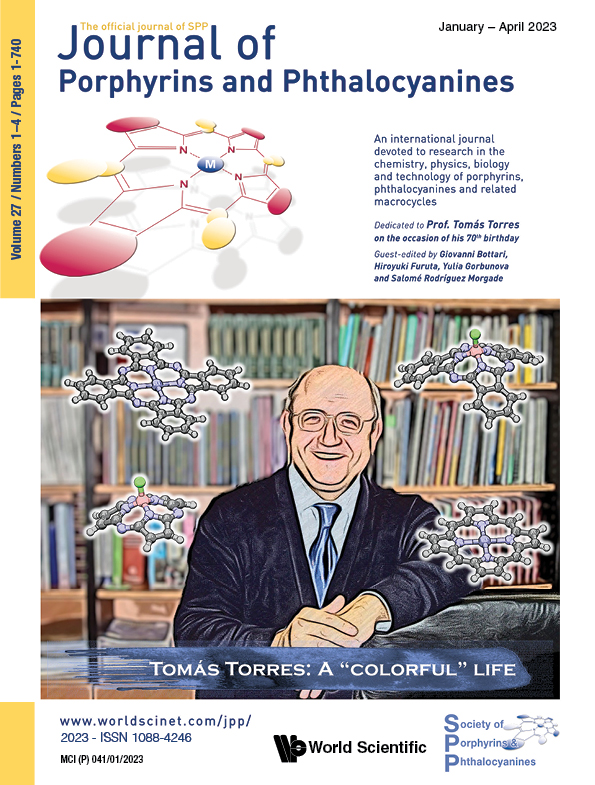Interface chemistry and displacement of porphyrin macrocycles on semiconductor quantum dot surface
Abstract
Here, we present comparative experimental data and results of quantum chemical calculations (method MM+) describing electrostatic interactions of positively charged 5,10,15,20-(tetra-N-methyl-4-pyridyl)porphyrin molecules with negatively charged glutathione stabilized core/shell semiconductor quantum dots (QD) AgInS/ZnS leading to the formation of stable QD-porphyrin nanoassemblies in water (pH 7.5) at ambient temperature. Based on steady-state absorption/ photoluminescence, time-resolved experiments (TCSPC), and Raman spectroscopy, interface phenomena and changes in spectral properties for interacting subunits in nanoassemblies are analyzed. Using an elaborated size-consistent quantum chemical atomistic 3D model for glutathione stabilized AgInS/ZnS QD, we propose a detailed physico-chemical mechanism for the interaction of the porphyrin molecule with the QD surface. It includes electrostatic interactions of the positively charged porphyrin free base molecule with negatively charged capping ligand (glutathione), followed by a very fast metalation of porphyrin free base (formation of ligated Zn-porphyrin complex) which is directly fixed on the QD surface. These results highlight the complexity of interface processes in “QDs – porphyrin” nanoassemblies and provide valuable strategies for the detailed analysis of the excitation energy relaxation in the systems under study.

Dedicated to Prof. Tomás Torres on the occasion of his 70th birthday
- tetra-meso-pyridyl substituted porphyrins
- glutathione stabilized core/shell semiconductor quantum dots AgInS/ZnS/GSH
- “quantum dot – porphyrin” nanoassemblies
- electrostatic interactions
- porphyrin free base metalation
- quantum chemical modeling (MM+) of the quantum dot structure and nanoassembly formation
- steady-state and time-resolved spectroscopy
- Raman spectroscopy
Handbook of Porphyrin Science now available in 46 volumes


